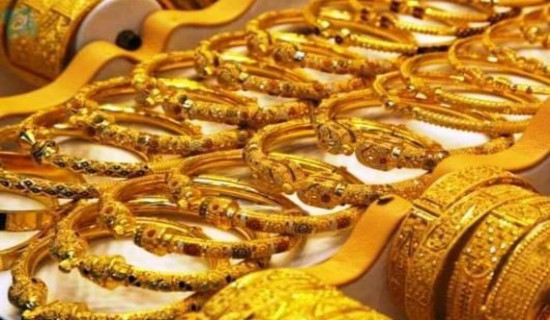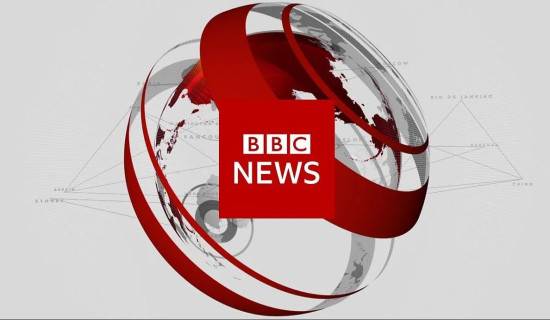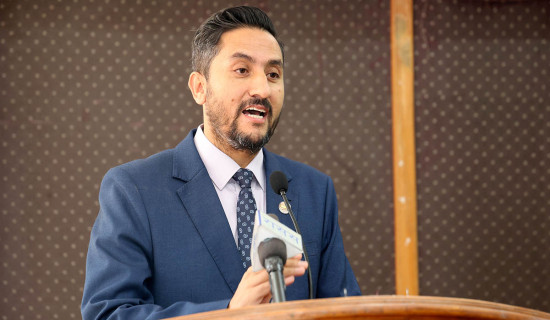- Wednesday, 17 December 2025
Prioritise Renewable Energy
This is the age of renewable energy. Fossil fuels have harmful effects not only on the environment but also on the human health. That is why the world is marching towards renewable energy. Nepal has also made remarkable advances in the renewable energy sector. In Nepal, renewable energy basically consists of hydropower and solar power. The development of wind power is negligible.
A report titled Energy Trade in South Asia shows that 85 per cent of the demand for energy in Nepal is met through traditional fuels such as firewood and cow dung. Traditional fuels are inefficient and harmful both from environmental and health perspectives. Now, 69 per cent of the demand for energy is met through traditional fuels because of the rapid development of hydropower.
Low power consumption
In South Asia, countries such as Nepal, India, Pakistan, Sri Lanka, Bhutan and the Maldives are exploring alternative energy such as hydroelectricity, solar power and wind power. In Nepal, the demand for energy is increasing owing to population growth and a change in lifestyles. However, the level of consumption of electricity is still low in Nepal. As per a report, the electricity consumption was 177 kWh per annum in 2018 vis-à-vis the global figure of 3,132.15 kWh.
However, Nepal is making strides in the renewable energy sector. The energy comes mainly from hydropower. Solar and wind power can supplement the energy requirements. Now, Nepal is self-sufficient in electricity. Even surplus electricity is produced in the country. But there are many out-of-the-way places where the people have no access to electricity. By building grid transmission lines, such surplus electricity can be made available to such places. The Nepal Electricity Authority is also building high-capacity transmission and distribution lines in Sunsari, Morang and Jhapa in order to increase domestic consumption of electricity and export surplus electricity to India and Bangladesh.
There is an energy trade between India and Nepal. They trade in electricity and petroleum products. The trade in electricity is a two-way street; they buy and sell electricity between them as per their requirements. However, Nepal only buys petroleum products from India as petroleum production does not take place in the country. Nepal is incurring a trade deficit year after year. A report released by the Central Bureau of Statistics in 2019 showed that petroleum consumption in the country had doubled during the five-year period from 2014 to 2019. With the import of a large number of vehicles, the consumption of petroleum products is increasing every year. It is estimated that the yearly increment is ten per cent.
Increasing imports of petroleum products have drained Nepal, a cash-strapped country, of its precious resources. The imports of petroleum products constitute around 14 per cent of the total imports. That is why it is imperative for the country to accelerate the replacement of petrol- and diesel-based transport with electric transport. It may be noted that petroleum products not only drain the national coffers but also harm the environment. Such harm may prove costly for the country in the days to come. Nepal has vast potential for developing hydropower. Although the country is prioritising solar power, the headway on this front leaves much to be desired. So the current hope lies in developing hydropower further.
India and Bangladesh have evinced interest in purchasing electricity from Nepal. If electricity can be developed in large quantity, it can be sold to South Asian countries and beyond. The government announced the Energy and Water Resources Decade (2018-2028) in 2018 to implement the Roadmap for Energy Development. The Roadmap aims at production, consumption and sale of electricity. It intends to increase national income by selling surplus electricity. There are several hydropower projects in the pipeline. Arun IV (490.2 MW), West Seti (750 MW), Arun III (900 MW) and lower Arun (769 MW) are expected to generate electricity in the 2030s.
However, encountering roadblocks in the development of electricity from these projects cannot be ruled out. The development of renewable energy can prevent the environment from further damage. It can reduce carbon footprints. The world is now aware of the damage done to the environment by carbon emissions. Renewable energy can replace fossil fuels, which contribute to degrading the environment and harming the human health.
Investment
Banks and financial institutions are making investments in the hydropower sector. But this is not enough. Nepal should solicit direct foreign investments from foreign countries and donor agencies. The demand for energy is growing day by day. It is estimated that 50 per cent more energy will be required in 2050 than it is today. International agencies such the US Energy Information Administration, the World Bank, the International Energy Agency and the International Renewable Energy Agency have estimated that there will be much growth in the renewable and clean energy sector in the days to come.
The government should prioritise renewable energy. Renewable energy should be encapsulated in the government’s planning. Rural areas with no access to electricity should be electrified on a priority basis. Households and industries should be encouraged to use electricity to increase the consumption of electricity. What is more, electric transport should be prioritised over fossil fuel-based transport. The policy of the government should be such that taxes on electric vehicles are lower so that they become popular with the people. Anyway, Nepal should utilise its potential for developing renewable energy to the fullest.
(Maharjan has been regularly writing on contemporary issues for this daily since 2000. uttam.maharjan1964@gmail.com)
















